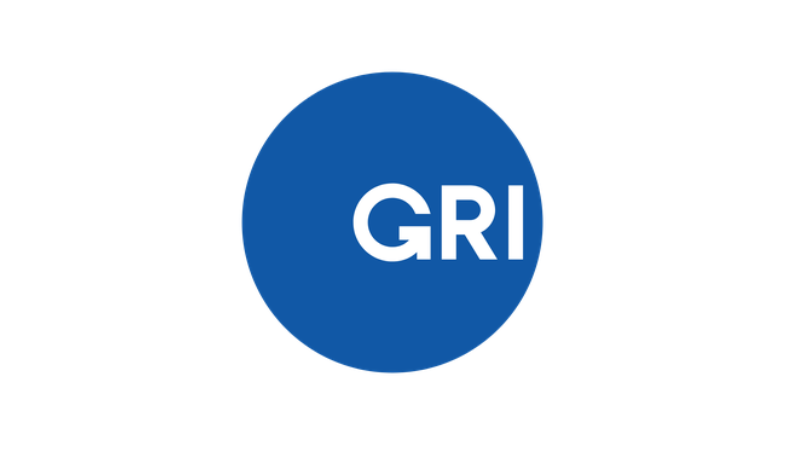Why is The Global Reporting Initiative important for printers who work for large corporations?
.png?width=750)
Laurel Brunner discusses the significance of The Global Reporting Initiative (GRI) for printers who work for large corporations and how print buyers require their media investments to align with corporate sustainability commitments and shareholder expectations.
Sounds gripping and for most printing companies the GRI is just that. Not. But it not being gripping doesn’t mean that the GRI isn’t important, or that it will have no impact on the printing and publishing industries. The organisation behind the initiative is large and well supported and it’s been grinding away at its standards for many years.
The GRI provides standard and transparent ways of sharing data throughout supply chains, especially environmental impact data. The organisation has developed standards for sustainability disclosures so that organisations can share best practises and take responsibility for their environmental impacts. Whether organisations will truly want to share such potentially sensitive data is another question, but at least a global common language for impact reporting is evolving. This matters for informed decision making, dialogue and investment which means it matters for print buyers.
The organisation was founded in 1997 and is describes its origins as having roots in “the non-profit organizations CERES and the Tellus Institute, with involvement of the UN Environment Programme.” GRI uses an independent, multistakeholder process to develop their standards, which are freely available. It published its first document, the GRI Guidelines in 2000. This document was the first in the world to provide a global framework for sustainability reporting. Since then the GRI has moved from guidelines to standards, publishing standards on tax (yes tax) in 2019 and waste in 2020. Sector specific standards started arriving in 2021, with the aim of having standards for 40 industrial sectors. The GRI is starting with those that have the highest sustainability impact: mining, oil and gas, agriculture and textiles. These are all sectors that the printing industry serves, so being able to provide environmental sustainability data to customers in those sectors is obviously a good thing. The problem for most Print Service Providers (PSP) lies in understanding what information is required, how to capture it and how to report it. Fortunately, the standards are free documents and can be downloaded from: https://www.globalreporting.org/standards/standards-development/universal-standards/ ISO also has a range of tools for the printing industry, including a carbon calculator for print and energy usage standards for digital printers.
Although the presence of the GRI in the graphics business is so far minimal, it is likely to become more important for our industry. The print business serves every other industry; printing cuts across all sectors of life from airlines and schools and government, to industry and consumer products. Every business’s second business is necessarily publishing. Thanks to technology consumers and aspiring artisans have access to inexpensive printing and publishing services whether its self-published books or labels for cosmetics.
The GRI matters and awareness of it is especially important for PSPs who work for large corporations. Their print buyers want their media investments to align with corporate sustainability commitments and with shareholder expectations. A passing understanding of this important sustainability reporting framework could make the difference between getting and retaining a contract or not.
Source Information: This article was produced by the Verdigris Project, an industry initiative intended to raise awareness of print’s positive environmental impact. This weekly commentary helps printing companies keep up to date with environmental standards, and how environmentally friendly business management can help improve their bottom lines. Verdigris is supported by the following companies: Agfa Graphics, EFI, Fespa, Fujifilm, HP, Kodak, Miraclon, RicohSplash PR, Unity Publishing and Xeikon.
Recent news

Green Printing: how Sustainability drives business success
Nessan Cleary shares sustainable printing benefits businesses and the environment. Auditing suppliers and using eco-friendly materials are crucial. Optimising production with energy-efficient equipment and minimising waste reduces costs. Proper waste disposal and premises efficiency further lower the carbon footprint. Staff training and customer recycling solutions complete the sustainable approach.

Sustainability and keeping the faith
Laurel Brunner discusses how the printing industry has drastically reduced its environmental impact through technological advances, despite lingering perceptions of paper waste. While consumer habits pose a challenge, the industry continues to pursue greener practices.

Kyocera wins Anthem Award for Sustainability, Environment and Climate
Laurel Brunner shares how Kyocera, a Japanese manufacturer of digital printing system was awarded a silver award for its green skills report on "A Green Edge: Green Skills for the Future".

How to design for a circular economy in a linear world
Laurel Brunner explains the challenges for businesses to prioritise circular economy when economies have evolved to be linear. Laurel shares examples of different businesses who are designing products that can suppor the circular economy. These include The Ellen MacArthur Foundation, DS Smith and Vilsund Blue A/S.